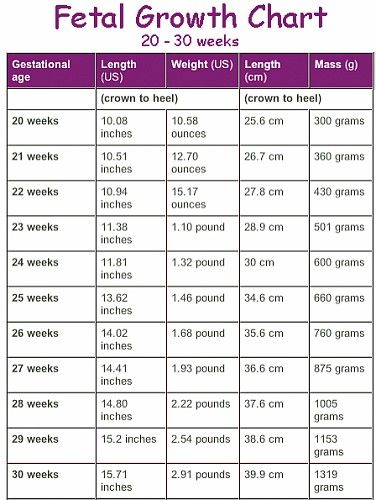Baby cereal finger food
5 Baby Cereal Recipes for Baby-Led Weaning
Jump to RecipeIron-fortified baby cereal can be used in lots of nutritious ways. Here are 5 easy recipes for baby-led weaning, perfect for feeding babies 6-12 months old. Teething biscuits, banana muffins and more!
If you’d like to learn more about this topic in a visual way, check out my Google web stories on 5 ways to use baby cereal for baby-led weaning!
In this post, I’ll share why I, as a pediatric registered dietitian, recommend using fortified baby cereal when starting solids, not only as a puree, but also in finger food recipes that are suitable for baby-led weaning. I’ll explain what iron-fortified infant cereal is, why it’s a good option for baby’s first foods, and how to create safe finger foods with baby cereal, for baby-led weaning. I’ll also explain why it’s important to include iron-rich foods in general, right from 6 months of age, and give some examples of how to do that. Some parents worry about arsenic in infant rice cereal, so I will share my recommendations on that as well.
Next, I’ll explain what baby-led weaning is, and why I recommend that babies learn how to self-feed right from 6 months of age. I will then share my top baby-led weaning recipes using iron-fortified infant cereal!
Oh! And if you haven’t already picked up a copy of my comprehensive guidebook for parents, Food to Grow On, make sure that you do! Inside my book, there is a a step-by-step guide on how to start your baby on solids and progress through textures (with visuals) and I answer your top questions on starting solids and baby-led weaning. There are also several homemade baby-friendly recipes included!
Why is iron so important for babies?
Iron-rich foods should be introduced right from the get-go (6 months), because iron stores (that they had built up in the womb) become depleted around this time. That being said, there is no rule saying that your baby’s first food can’t be avocado, carrots, green beans or banana. You just want to make sure that iron-rich foods are introduced right around 6 months of age as well, and served daily. Babies between 6 and 12 months of age should be offered iron-rich foods at least twice a day (one to two small servings). Soft and tender pieces of meat or finely minced, ground or mashed cooked meat, de-boned fish (like these skillet tuna patties), poultry, well-cooked whole egg, beans, and lentils (like these vegan lentil nuggets) are great first foods. Add in a serving of plant-based, non-heme iron (infant cereal, lentils, beans, spinach) and your baby will be getting everything he needs iron-wise.
Babies between 6 and 12 months of age should be offered iron-rich foods at least twice a day (one to two small servings). Soft and tender pieces of meat or finely minced, ground or mashed cooked meat, de-boned fish (like these skillet tuna patties), poultry, well-cooked whole egg, beans, and lentils (like these vegan lentil nuggets) are great first foods. Add in a serving of plant-based, non-heme iron (infant cereal, lentils, beans, spinach) and your baby will be getting everything he needs iron-wise.
Starting solids? Don’t panic.
Starting solids is an exciting milestone in your baby’s life, but it can also be confusing, especially when you’re overloaded with conflicting information on how and when to do it. Download your free guide to starting solids and clear the confusion!
Download my free guide now!
What is iron-fortified infant cereal?
We all know that iron-fortified infant cereal has traditionally been used as a staple first food for babies when they start solids.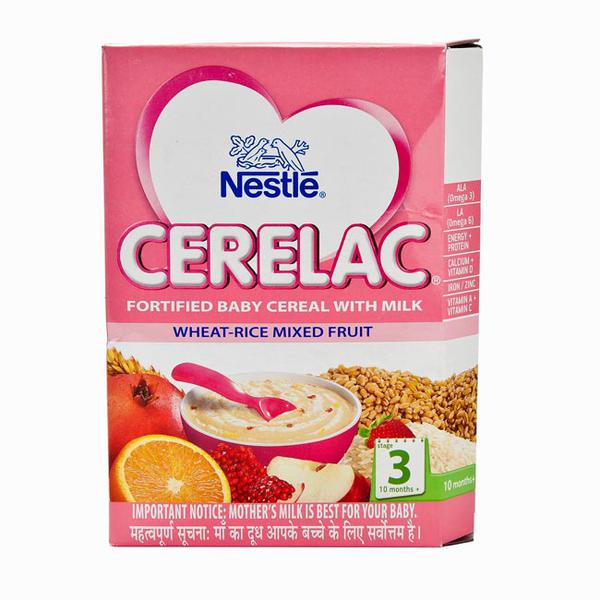 And there are many reasons why!
And there are many reasons why!
Infant cereal is:
- Neutral tasting and generally well-accepted by babies
- It provides a great source of iron—80% of babies daily needs in 1/3 of a cup dry–which is a very important nutrient for babies, as their iron stores are depleted by 6 months of age
- They are safe, convenient and shelf-stable. They can come in handy if your baby attends daycare or if you’re in a rush and want to make sure she is getting her quota of iron for the day.
- It is EASY to prepare and serve
What you might not realize is that iron-fortified infant cereal can be used in many ways… not just the same old same old! In fact, you can use infant cereal in homemade finger foods to support self-feeding, which we all know has many benefits, right from 6 months!
When is it safe to introduce solids (including iron-fortified infant cereal)?
My recommendation as a pediatric dietitian is to wait until 6 months of age to introduce solids (which includes introducing iron-fortified infant cereal). There are some considerations and important signs to look for to know when baby is ready to start solids (click the link to learn more). Some experts recommend starting as early as 4 months of age, but most babies aren’t developmentally ready to start solids at that time, and if a baby is exclusively breastfed, we recommend that mom carries on with exclusive breastfeeding until 6 months of age. Once baby is around 6 months (and showing signs of readiness listed below), you can introduce solid foods.
There are some considerations and important signs to look for to know when baby is ready to start solids (click the link to learn more). Some experts recommend starting as early as 4 months of age, but most babies aren’t developmentally ready to start solids at that time, and if a baby is exclusively breastfed, we recommend that mom carries on with exclusive breastfeeding until 6 months of age. Once baby is around 6 months (and showing signs of readiness listed below), you can introduce solid foods.
What is baby-led weaning?
Baby-led weaning is a feeding strategy that some parents choose, which allows babies to self-feed exclusively (meaning no spoon feeding!) from 6 months of age. As a pediatric dietitian, I support parents whether they choose to do baby-led weaning, or spoon-feeding (or a combo!), as long as all feeding is baby-led. If you are going the baby-led weaning, here are my top baby-led weaning tips.
What type of infant cereal should I buy?
If you do choose to serve iron-fortified infant cereal, there are now some really nutritious, high quality varieties at the store.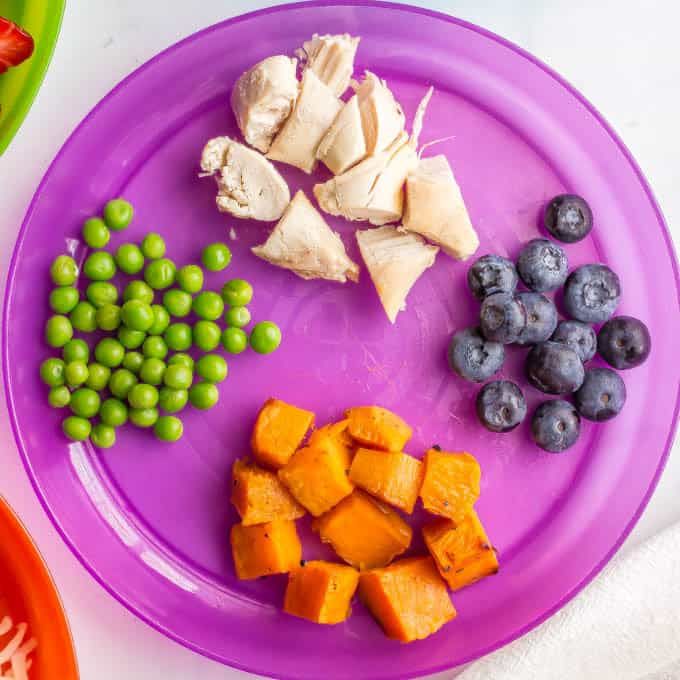 What you should be looking for are infant cereals that are enriched with important vitamins and minerals such as iron, thiamine and niacin, and that provide at least 2 grams of dietary fibre per serving. My preferred varieties are oat, barley, or mixed grain. Also, ensure that there are no weird ingredients or artificial colours or flavours.
What you should be looking for are infant cereals that are enriched with important vitamins and minerals such as iron, thiamine and niacin, and that provide at least 2 grams of dietary fibre per serving. My preferred varieties are oat, barley, or mixed grain. Also, ensure that there are no weird ingredients or artificial colours or flavours.
But isn’t rice cereal bad because of the arsenic?
Parents should be aware that rice-containing foods (such as infant rice cereal) do contain arsenic, as well as other metallic elements such as mercury and cadmium. The rice plant is really effective at soaking up these elements out of the soil and ground water. The rice plant is also very efficient at absorbing inorganic arsenic (a form of arsenic that lacks the organic element carbon), which is much more harmful to humans than its organic counter-part. This is even true in brown rice.
Arsenic is a known carcinogen and can also cause cardiovascular, respiratory, metabolic and immune-related health issues. But, the good news is, the FDA has set limits on the amount of arsenic in these infant/toddler foods, which is one step in the right direction. And we know that the occasional serving (once or twice a week) of rice cereal, or whole rice — whether brown or white — is completely fine when included in an otherwise balanced and nutritious diet. There’s no need to panic if you’ve been serving your baby infant rice cereal! Just mix it up with other grain varieties of cereal, and other iron sources too.
But, the good news is, the FDA has set limits on the amount of arsenic in these infant/toddler foods, which is one step in the right direction. And we know that the occasional serving (once or twice a week) of rice cereal, or whole rice — whether brown or white — is completely fine when included in an otherwise balanced and nutritious diet. There’s no need to panic if you’ve been serving your baby infant rice cereal! Just mix it up with other grain varieties of cereal, and other iron sources too.
Why should I use iron-fortified baby cereal in finger foods?
One of the main concerns of parents who choose to do baby-led weaning is that their baby won’t get enough iron. This is a valid concern, as baby determines exactly how much food they eat (and it’s hard to predict how much will make it into their tummies!).
So, if you’re feeding baby meat, fish or poultry (all higher iron foods), and they decide to throw it on the ground instead (which is totally normal), they may not meet their daily needs for iron.

Including iron-fortified infant cereal with otherwise lower-iron soft, safe finger foods (avocado, banana etc.) can increase the chances of baby meeting their iron requirements for the day, and can also help with gripping these slippery foods! It can act as a replacement for breadcrumbs or flour in some recipes too!
Here are my top 5 creative ways to use infant cereal when feeding your baby
1. Coat bananas, avocado or pears in infant cereal for better grip.
Babies as young as 6 months can start eating soft and safe finger foods like ripe banana, avocado and pear, but those foods easily slip out of their hands. Coating it with some infant cereal not only helps baby to grip it, but also adds some iron!
2. Make Homemade iron-rich teething biscuits
Homemade iron-rich teething biscuits are oh-so-fun for babies because they’re delicious and can be made into fun shapes using cookie cutters! My go-to cookie cutter was a firetruck! Enlist the help of your older kids for a fun activity.
This recipe comes together easily and can be made vegan or gluten free if needed. In a large bowl combine
- 1 banana
- 1/2 cup iron-fortified cereal
- 1/2 cup whole wheat flour
- 1 tbsp coconut oil
- 1 tbsp cinnamon
- 2 tbsp or more of water (to get sticky consistency)
Use a cookie cutter to cut out biscuits and bake on a cookie sheet at 400 for 15 minutes.
3. Replace breadcrumbs or oats with infant cereal for meatballs, or meat patties for an iron and protein-rich baby-friendly finger food.
Meatballs (like these turkey and lentil meatballs) and meat patties are a great starting finger food for babies. They can be molded into just the right size and easily break apart for safe consumption. Adding iron-rich infant cereal is an easy way to elevate the nutritional profile of an already great finger food.
Introducing a nice variety of tastes and textures between 6-9 months is important for oral-motor development, dexterity and to widen their palate.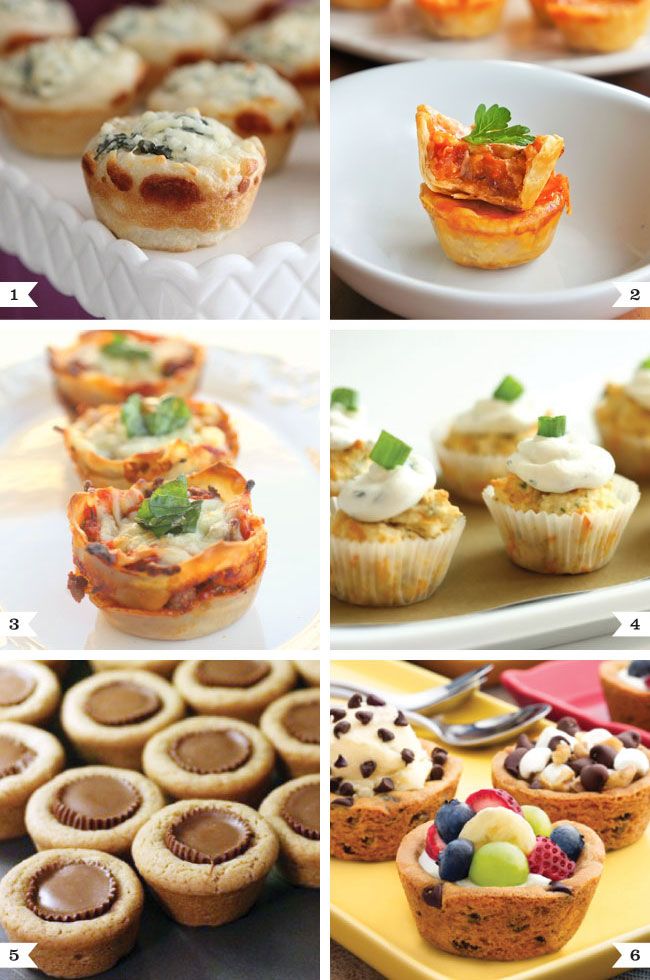 These meatballs are the perfect size and texture for a baby learning how to self-feed.
These meatballs are the perfect size and texture for a baby learning how to self-feed.
Ingredients:
- 1lb of ground turkey (you can use any ground meat)
- 1 can lentils, drained and rinsed
- 1 cup rolled oats (you can substitute ½ of this for iron-fortified infant cereal if you have some that you have to use up)
- 2-3 eggs
- 1 cup grated or chopped veggies (I use a combo of grated carrot, chopped spinach, and grated zucchini)
- 1/2 cup parmesan cheese, grated
- 1 tsp garlic powder
- other dried herbs (optional)
Directions:
- Preheat oven to 400F and line or grease a baking sheet.
- Combine all ingredients in a large bowl and mix well with clean hands.
- Form into 24 medium-sized balls and place on a lined, greased, or non-stick baking sheet.
- Place in the oven and bake for 12-minutes, or until they reach an internal temperature of 170F.

This recipe makes 30 meatballs.
4. Make homemade baby banana muffins
Muffins are a fantastic starting solids food as they are so versatile. Egg muffins, mini-meat muffins, and even delicious baking muffins. They are the perfect portion for baby and can be made in big batches and frozen! My recipe for iron-rich mini banana muffins has no added sugar, which is exactly what little ones need!
In a medium bowl combine:
- 1 cup whole grain flour
- 1 cup Baby Gourmet Iron-Fortified Oatmeal Cereal
- 2 tsp baking soda
- 1 tsp cinnamon
In another medium bowl combine:
- 2 ripe, mashed bananas
- 3 eggs, whisked
- 1 tsp vanilla
- 2 tbsp of melted coconut oil
- 1/3 cup water
Fold wet ingredients in with dry, spoon dough into mini muffin tins and bake at 350 F for 16 minutes.
5. Sprinkle into baby-friendly foods such as smoothies, oatmeal, full-fat plain yogurt, or a fruit pouch!
This is a great way to use up leftover infant cereal and add some texture (and iron!) to more advanced spoon foods.
As you can see, there are lots of creative and nutritious ways to use infant cereal when introducing solids. When starting solids it is important that your baby is offered iron-rich foods first, and at least twice a day. As your baby continues to explore other nutritious and exciting foods keep in mind that iron is still an important nutrient. So keep finding fun and interesting ways to offer iron rich foods!
Ingredients
- 1 banana
- 1/2 cup iron-fortified cereal
- 1/2 cup whole wheat flour
- 1 tbsp coconut oil
- 1 tbsp cinnamon
- 2 tbsp or more of water (to get sticky consistency)
Instructions
- Preheat oven to 400F. Line a baking sheet with parchment paper.
- In a large bowl, combine the banana, cereal, flour, oil, cinnamon, and water to reach a dough-like consistency.
- Roll out the dough on a floured surface until ¼ - ½ inch thick. Use cookie cutters to cut out shapes.
- Transfer to the prepared baking sheet.
 Bake for 15 minutes. Cool and serve or store in the freezer for up to 3 months.
Bake for 15 minutes. Cool and serve or store in the freezer for up to 3 months.
Notes
Enlist the help of your older kids for a fun baking activity!
If you feel that you need one on one support, we’re happy to help! Contact us at The Centre for Family Nutrition
First Finger Foods | Weaning & Cereal for Babies
Why Cheerios?
Cheerios are made for little fingers to help with development of fine motor skills, encourage self-feeding independence and learning the pincer grip technique. The unique O shape of Cheerios may reduce the risk of choking and it dissolves easily in the mouth. Considered a favorite first finger food by moms, ensure your child has a nutritious start every day with 100% Whole Grain oats, 2 grams of fiber and no artificial colors or flavors.
Birth to 6 Months
What’s baby’s first food?
Breast milk or formula is your baby’s first food. It’s all they need. At about 6 months though, your baby starts letting you know that he or she is ready for other kinds of foods.
What are signs that your baby is getting ready for solid foods? Always check with your child’s pediatrician before starting your baby on any solid foods.
- Your baby’s birth weight has doubled.
- Your baby is hungry a lot more of the time.
- Your baby can swallow better and drool less.
- Your baby can sit up while supported. Always make sure your child is sitting up while eating.
6 to 9 Months
Breast milk or formula is still one of your child’s most important foods. What should be your baby’s first solid food?
- Most medical experts suggest the best time to introduce solid foods is around 6 months old. Always check with your child’s pediatrician before starting your baby on any solid foods.
- Always make sure your child is sitting up while eating. For the child’s safety, be watchful while he or she eats solid foods.
- Examples of appropriate complementary foods:
- Iron fortified, single-grain infant cereal
- Mashed banana
- Cooked, mashed vegetables like carrots, peas or sweet potatoes
- Begin by introducing one new food at a time every several days offering a few spoonfuls each day, to monitor for food sensitivities, before moving on to a new food.
 Parents with food allergies should discuss concerns with their pediatrician.
Parents with food allergies should discuss concerns with their pediatrician.
Around 9 Months
When can you introduce first finger foods (like Cheerios)? Look for these two signs:
- Your child has a lot of experience chewing (even though your child doesn’t have many teeth).
- Your child develops what’s called a “pincer grasp” and is able to pick up small objects between thumb and index finger.
Other appropriate foods to try:
- Sliced and quartered banana or diced pieces of other soft fruits like diced pears and peaches.
- A variety of cooked vegetables cut into small pieces, such as squash and green beans.
9 to 12 Months
Always make sure your child is sitting up while eating. For the child’s safety, be watchful while he or she eats solid foods.
What are good foods to try and foods to avoid? In general, “mushy” foods or foods that dissolve easily in your child’s mouth are best.
Try:
- Dry breakfast cereals (without nuts or chunks)
- Wafer-type crackers, bread, and soft tortillas (without nuts, seeds or chunks)
- Soft canned fruit, cut into small slices (peaches or pears)
- Soft cheese wedges or sticks, cut into bite-size pieces)
- Yogurt or cottage cheese
- Plain cubes or well-cooked vegetables (carrots or potatoes)
- Small, pea-sized pieces of cooked meat or poultry
- Well-cooked noodles
Avoid:
- Grapes, berries or raisins
- Nuts
- Potato chips or popcorn
- Corn
- Fruit that is under ripe, dried, unpeeled or in chunks
- Raw or uncooked vegetables
- Hot dogs or luncheon
- Peanut butter on a spoon
1 to 2 Years
To give your child a balance diet and safe foods, follow this sample menu plan.
 *
*| Ingredient | Amount |
|---|---|
| Milk | 1/2 cup |
| Banana | 1/4 banana |
| Cheerios* cereal | 1/2 cup |
| Toast | 1/2 slice |
| Butter or margarine | 1 tsp. |
| Ingredient | Amount |
|---|---|
| Yogurt | 4 oz |
| Fruit | 1/2 piece |
| Ingredient | Amount |
|---|---|
| Milk | 1/2 cup |
| Grilled cheese sandwich | 1/2 sandwich |
| Carrots, cooked, diced | 2 Tbsp |
| Ingredient | Amount |
|---|---|
| Milk | 1/4 cup |
| Cheerios* cereal | 1/4 cup |
| Ingredient | Amount |
|---|---|
| Milk | 1/2 cup |
| Meat loaf | 2 oz |
| Rice | 2 to 3 Tbsp |
| Green peas | 2 Tbsp |
| Butter or margarine | 1 tsp. |
| Oranges, seedless, peeled and pulled into sections | 1/4 orange |
* The serving sizes listed may vary depending on your child’s growth and activity. If you have questions, ask your doctor.
Dry breakfasts: benefits and harms for children and adults
"Breakfast of Champions" or a quick, but perhaps not too healthy alternative to good old cereals? Our article is all about breakfast cereals and how to choose the best option for you and your child.
Types of breakfast cereals
Bran. This is the oldest of all types of breakfast cereals, created from the hard shell of grain, which is not used to make flour. The bran of wheat, oats, buckwheat, barley, rice and other grains contains a large amount of amino acids, protein and trace elements. In addition, because of the fiber in the composition of bran, they are an excellent tool for cleansing the stomach and help in the process of losing weight.
Flakes. The history of the most common corn flakes began with a curiosity. At the end of the 19th century, the American sexologist John Kellogg and his brother Will, after preparing breakfast, left the remains of cornmeal mixed with water on the stove. By the time they returned, the dough had dried out, turning into flakes and lumps. The economical Kelloggs did not throw away the dough, but fried it and got crispy delicious cereal. Now the Kellogg Company is America's largest manufacturer of breakfast cereals and instant products, and corn flakes have become one of the symbols of the American breakfast.
Muesli. A type of breakfast cereal made from raw or baked cereals, bran, dried fruits, wheat germ, dried berries, chopped nuts, honey and spices. In general, muesli was invented in 1900 by the Swiss physician Maximilian Oskar Bircher-Benner for the patients of his hospital, but after half a century it has become one of the most popular products for those who follow diets and lead a healthy lifestyle.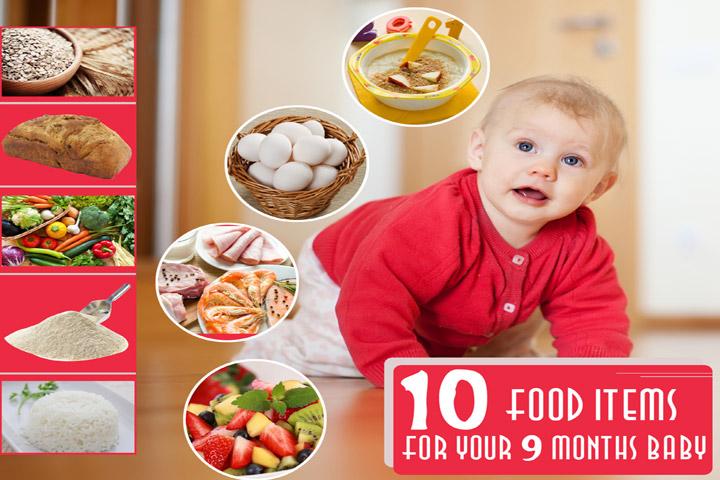
Balls. Ordinary and chocolate balls, figures and rings (and also the famous corn sticks) are the most technologically new type of breakfast cereal. It is created from specially prepared cereals by extrusion, when a press squeezes out products of a certain shape from a plastic foamed dough.
Benefits of breakfast cereals
There is a lot of talk about the benefits of breakfast cereals. However, they are chosen primarily for convenience. The main consumers of cereals and chocolate balls are still not adults, but children. And even a preschooler can pour milk over muesli and cereal.
Another undoubted plus is that breakfast cereals are quite tasty and suitable even for picky children who need to be accustomed to milk and sour-milk products (and they are usually poured over cereal or muesli).
Breakfast cereals contain a large amount of trace elements, phosphorus, magnesium, vitamins A and E, as well as plant fiber, which is good for health. All this information is usually on the packaging.
All this information is usually on the packaging.
Finally, breakfast cereals are high enough in calories to last on the “charge” from them until lunch. They give you a quick satiety and, by the way, are suitable for a pre-workout snack.
Harmful breakfast cereals
The main complaint about breakfast cereals is a large amount of sugar. Due to the high content of sucrose, the level of sugar in the blood also rises. As a rule, after a couple of hours, sugar begins to “fall”. If the body is healthy, a person may experience a strong feeling of hunger, general weakness and drowsiness. However, in the presence of any chronic disease, worse symptoms can appear - headache, heart palpitations, feelings of fear and anxiety, tremors and nausea.
The second possible negative is the manifestation of an allergy to gluten, cereal pollen or nuts.
What to look for when choosing breakfast cereals
The presence of bran and rye flakes makes breakfast cereals more healthy. Ideally, it is better if whole grain flour is used for making and sugar and salt are not used at all.
Ideally, it is better if whole grain flour is used for making and sugar and salt are not used at all.
Multigrain breakfast cereals are also considered healthier due to the combination of different nutrients.
Breakfast cereal alternatives
Kashi. Good old food that people have been eating for centuries. Porridges are easy to prepare and can always be flavored with fruits, nuts, seeds and cinnamon. By the way, oatmeal does not have to be cooked at all.
A popular recipe for cold oatmeal in the summer: in the evening, pour yogurt or milk over cereal, cover and refrigerate, and in the morning add pieces of berries or fruits and eat.
Recently, granola has gained popularity in Russia, a type of American breakfast cereal and snack containing oatmeal, nuts and honey, which are baked until crispy. Often granola is sold in the form of bars, which makes it a convenient snack during hikes and walks.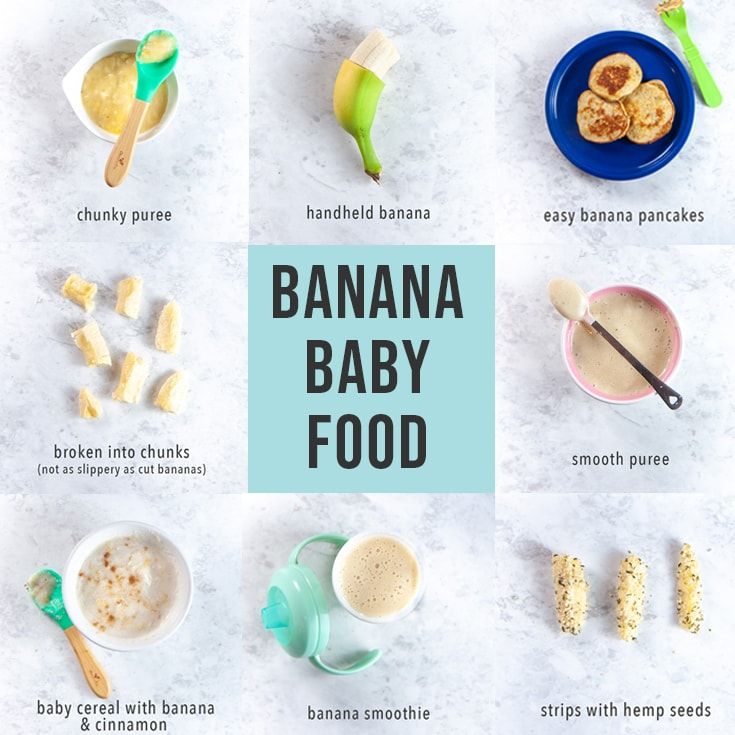
Homemade granola recipe
Ingredients:
- 300 g oatmeal;
- 180 g nuts and seeds;
- 180 g dried fruits and dried berries;
- 125 ml honey;
- 125 ml apple juice;
- 60 g vegetable oil;
- salt, cinnamon and other spices to taste.
In one bowl, combine the oatmeal and nuts (dried fruit can be added directly or to a ready-made granola). In another, combine honey, juice, oil, salt, spices and heat on the stove so that the mass becomes liquid and the salt dissolves. Then pour the hot liquid into the cereal and nut mixture and mix thoroughly.
Pour the resulting mass into a mold (previously covered with parchment or baking paper) and send it to the oven. Bake at 160 degrees for 40-50 minutes. At the same time, every 10–15 minutes, the granola must be taken out and mixed so that it bakes evenly. The crispy granola becomes an hour after cooling.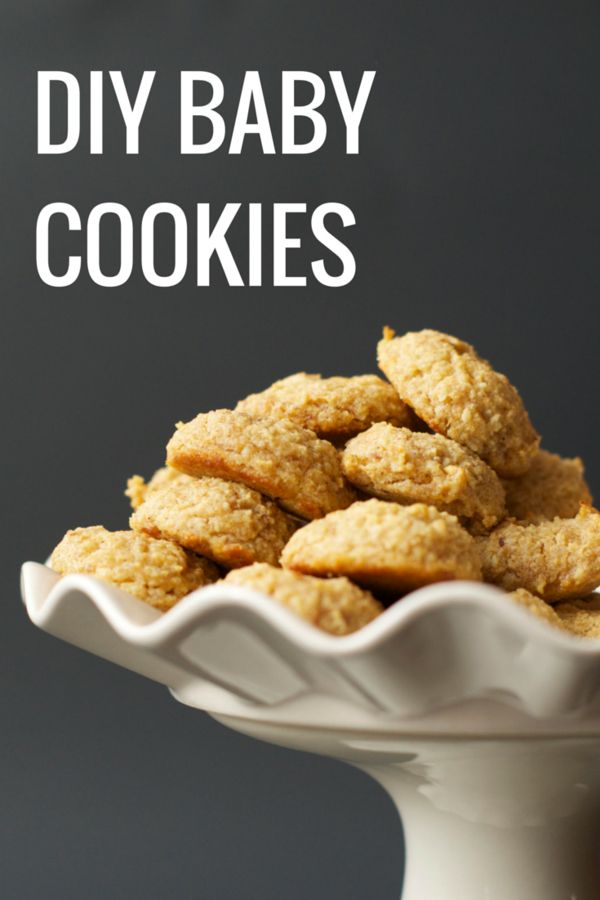
The main advantage of homemade granola is that you can adjust the amount of sweet and savory ingredients, as well as nuts, according to your meal plan. For all the ingredients to make your own granola, look at TEA.ru in the "Grocery" section.
Bon appetit!
Dry breakfast for children benefits and harm from what age
Content
- Varieties of dry breakfasts
- Roskontrol: Dry breakfast rating
- Dry Breakfast for children
- benefits
- Contraindications
- Whether it is useful milk
- At what age can children be given
- How to make dry breakfast at home: recipes
- Homemade muesli
- Homemade granola with nuts and fruits
- Granola bars
- Reviews
Are breakfast cereals healthy? The debate about this has been going on for a long time. On the one hand, the body needs to get enough carbohydrates in the morning to be energetic all day. On the other hand, the fast-digesting carbohydrates of cereals boiled with sugar and richly flavored with chocolate, molasses or honey are not beneficial, but can cause diabetes, obesity and other diseases. Not all breakfast cereals are equally healthy for children!
On the other hand, the fast-digesting carbohydrates of cereals boiled with sugar and richly flavored with chocolate, molasses or honey are not beneficial, but can cause diabetes, obesity and other diseases. Not all breakfast cereals are equally healthy for children!
Varieties of breakfast cereals
In many ways, the usefulness of breakfast cereals depends on the production technology. The simplest and most useful - ordinary bran - ceases to be in demand. Dry breakfasts have largely lost their value, turning into a delicacy. In pursuit of consumers who prefer sweet, tasty and beautiful, manufacturers began to produce a product that can only be called breakfast with a stretch.
Today in grocery stores you can find the following types of breakfast cereals.
- Flakes. These are, as a rule, processed grains of cereals that are ready to eat if they are poured with milk or sour-milk drinks.
- Muesli. Available in the form of flakes. May be with additives.
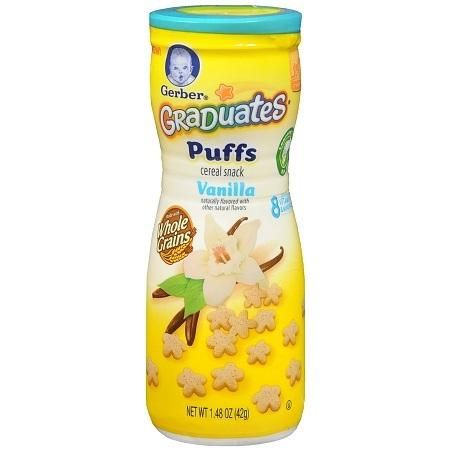 Sold with pieces of dried fruits, nuts, candied fruits.
Sold with pieces of dried fruits, nuts, candied fruits. - Snacks. The shape is varied - balls and stars, as well as pads. The basis of snacks is cereals that have been treated with steam pressure.
- Granola. For these breakfast cereals, whole grains are taken and baked with honey and nuts. Chocolate, caramel can be added. These are the most high-calorie breakfasts and the most popular.
The healthiest cereals for breakfast
Roskontrol: rating of dry breakfasts
According to the results of Roskontrol's inspection of the largest segment of breakfast cereals on the Russian market - chocolate balls, it was found that only 12 out of 18 brands meet safety requirements. In the top five:
- dry products of extrusion technology, corn and chocolate balls - manufacturer Globu;
- Schär chocolate balls;
- multigrain balls manufactured by Kuzya Lakomkin;
- Krosbychocoballs extrusive breakfast cereals with vitamins;
- figured dry breakfasts with chocolate "Korovka".

There is also a black list. These breakfasts should never be eaten as they contain dangerous ingredients. So, in Nesquik chocolate balls they found a toxin - ochratoxin A, in breakfasts, Disney Tapes, in addition to ochratoxin, found that the level of sucrose and table salt exceeded the norm. Blacklisted and Dansonia. In these breakfast cereals, laboratory analysis showed the presence of ochratoxin A, which indicates low-quality raw materials, a high content of proteins, sucrose and salt. Breakfasts "Okay" were in this anti-rating due to the presence of ochratoxin A in the product and sucrose twice the norm.
The Roskontrol rating of muesli, which is considered one of the healthy dry breakfasts, looks like this:
1st place - crispy muesli with pieces of fruit OOO Emko Tula.
2nd place - AXA muesli, honey with fruits and vitamins E.
3rd place - muesli "Age of cereals" with tropical fruits, manufacturer "Lux-Version".
4th place - muesli "Ogo!" Baked breakfasts with tropical fruits.
5th place – Dr.Oetker muesli, fruit, without sugar.
Benefits and harms of natural coffee for human health
Cereals for children
Of course, children like colorful, crunchy, sweet breakfast cereals. An ordinary morning immediately turns into a holiday when mom puts elegant corn or rice balls, or stars on a plate. The mood rises, the appetite increases. What else do you need for a good breakfast?
Benefit
Why did breakfast cereal become popular? If the taste and conviviality of the dish is important for children, then parents need food to be good for the body.
Many breakfast cereals are prepared with added nutrients and vitamins. If, in addition to the dry mix, you also have breakfast with yogurt or another fermented milk product, then you can get enough and not feel hungry until dinner. Dry breakfasts can serve as sorbents, freeing the body of toxins and cholesterol. This product helps the intestines.
Another important point: a child acquires the first skills of independence when he starts preparing breakfast for himself without the help of his parents. Dry breakfasts are ideal. But only unprocessed cereal breakfasts, that is, muesli, will bring real benefits.
Harm
Dry breakfast for children. It is impossible to abuse dry breakfasts. This is a very high calorie dish. The technology is such that flakes or grains first go through sugar-salt baths, then they are fried in a large amount of oil, then they are “decorated” with chocolate, molasses, honey or sugar. As a result, breakfast cereals can compete with sweets in terms of the number of calories.
Some breakfast cereals do not use sugar. Sweeteners are taken instead. This supplement is harmful to the child's body. It is better not to buy such a product for a child. In addition to sweeteners, manufacturers use flavors, flavor enhancers and other additives that will adversely affect children's health.
This supplement is harmful to the child's body. It is better not to buy such a product for a child. In addition to sweeteners, manufacturers use flavors, flavor enhancers and other additives that will adversely affect children's health.
Another disadvantage of breakfast cereals is that cereals lose fiber during cooking, which is so necessary for the health of the body. As a result, breakfast ceases to be useful and, with constant use, will lead to metabolic diseases, obesity, and stomach problems.
Honey for children: useful properties and contraindications
Contraindications
People who cannot boast of good health should think before treating themselves to dry breakfasts. So, from breakfast cereals you need to refuse if:
- Caries.
- Product intolerance and allergy.
- Type 2 diabetes mellitus.
- Tendency to thrombophlebitis.
- Overweight.
- Problems with the work of the stomach and intestines.
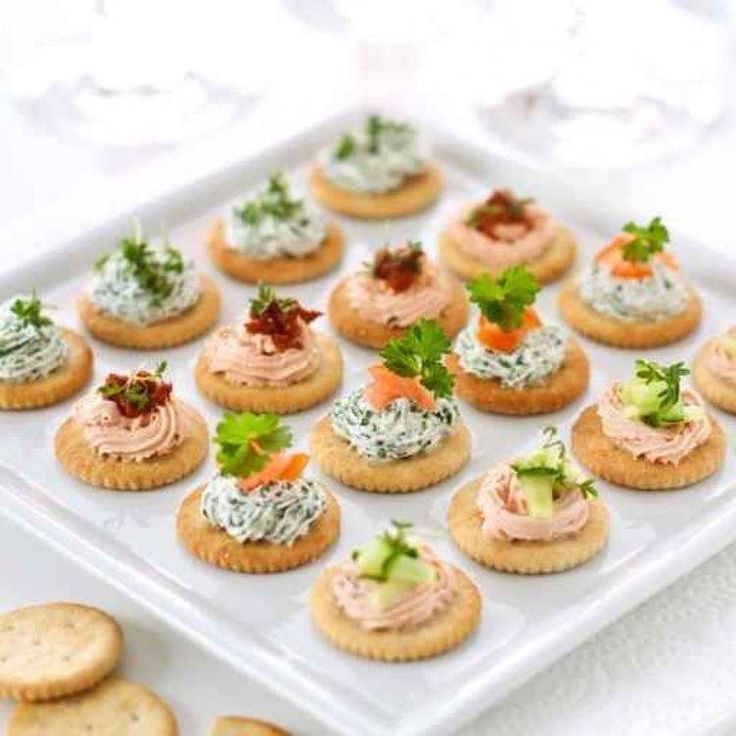
If there are no such diseases, breakfast cereals can be introduced into the diet. However, they should not be a regular morning dish! They are best used as a treat or snack.
Is it useful to fill dry breakfasts with milk
Dry breakfasts for children. Eating dry food is harmful. Dry breakfasts are starting to play the role of a treat, an unhealthy snack. Fast carbohydrates increase the level of sugar, this leads to the active production of insulin. As a result, the person feels hungry again.
Dietitians advise filling breakfast cereals with fermented milk drinks and yogurt so that the product is gradually assimilated by the body. There is no lactose in kefir, fermented baked milk and yogurt due to lactic acid bacteria. Milk, which contains milk sugar, can cause an upset stomach.
What absolutely can not pour dry breakfasts? Juice. The fact is that juice, especially purchased, and not prepared at home, is too sweet. As a result, a dry breakfast is put dangerous - it has too much sugar.
Nutritionists also do not recommend microwaved breakfast cereals filled with milk or other beverages. Heating will lead to an increase in fast carbohydrates, which will adversely affect the health of the body.
Goat milk: benefits and harms for a child
At what age can children be given
So that breakfast cereals do not harm children's health, you need to know until what age such a snack should not be used.
Flakes and corn balls should not be given to children under 5 years of age. This is not a full breakfast, but a treat.
Muesli may appear on the children's menu earlier. These dry breakfasts can be given to three-year-old babies, but boiled. Raw muesli can be introduced into the diet of older preschool children. However, muesli should not appear on the menu more than once a week.
Granola - baked muesli - is offered as a snack for children aged 5, but not more than twice a week. Six-year-old children are not forbidden breakfast of granola, but once a week.
Healthy candies: recipes
How to make breakfast cereal at home: recipes
Both muesli and other breakfast cereals for children can be prepared at home. To do this, you will need fruits, cereals, nuts and honey. And the oven, where a healthy treat will be baked. These breakfasts are prepared very quickly.
Homemade muesli
You can make muesli at home that will be much healthier than store-bought muesli.
Ingredients: a glass of cereal flakes, a quarter glass of bran, the same amount of nuts, pumpkin seeds and dried fruits, 12 g of sesame seeds, linseeds, 60 g of honey.
Method of preparation:
Pour flakes, seeds, nuts, bran and dried fruits onto a sheet of parchment placed on a baking sheet. Put the baking sheet in the oven, preheated to 200 degrees. Dry a little, it will take no more than 5-7 minutes. Take out a baking sheet, put honey and stir everything. Place back in the oven at the same time. Then take out the tray and let the muesli cool down. Now they can be eaten. They are good both dry and with the addition of unsweetened natural yogurt.
Homemade fruit and nut granola
All children love to chew on something. Instead of purchased delicacies, children can be pleased with cereals that are cooked at home.
Ingredients:
- 180 g applesauce
- 40 g butter
- 400 g coarse oatmeal
- 5 tbsp. l. liquid honey
- 1 apple
- 35 g ground nuts
- 35 g coconut
- 1 tsp. cinnamon
Cooking method:
- Mix honey, melted butter, cinnamon and applesauce.
- Add oatmeal and stir.
- Spread the oatmeal on a baking sheet lined with baking paper.
- Top with diced apple.
- Bake in the oven at 170 degrees for 40-50 minutes.
- Every 10 minutes, take out and stir the oatmeal so that everything is evenly baked.
- 10 minutes before readiness, take out the oatmeal, pour in the shavings and ground nuts, mix and send it back to the oven to reach.
Cover the baking sheet with parchment paper. On top of the parchment spread the mass in small drops, the size of large buttons. You can use a pastry bag or a teaspoon. Bake in an oven heated to 80 degrees. When ready, take out the cereal and set aside.
Granola bars
Ingredients:
- 300 g oatmeal
- 300 g dried apricots
- 150 g nuts 3 9063 50 g raisins l. honey
- 3-6 tbsp. l. odorless vegetable oil
Cooking method:
- Heat honey, add oil and stir.
- Add cereal, chopped dried apricots, raisins and nuts and mix.
- Spread in a form covered with parchment paper and bake at 180 degrees until golden brown.
You can choose completely different dried fruits according to your taste: it can be prunes, dried pears or apples, candied fruits. You can add sesame seeds or peeled sunflower seeds to the bar. Nuts and seeds are best dried in a preheated pan. so they get a rich taste and aroma.
4. After cooling, cut the mass in the mold into rectangular or triangular bars. Whoever likes it. Great and healthy snack for kids and adults!
Is it possible for a child to have chocolate?
Reviews Thanks for warning.
Vlada, Moscow
Wow, what poison our kids! Shame on you gentlemen! If only to fill his pocket, but they don’t care about the health of children.
Sergey, Petushki
I have been making muesli myself for a long time. It turns out tasty and satisfying. And I advise others! You can take those nuts and fruits that you like, make it to your liking. This breakfast is really good.
Elena, Kamensk-Uralsky
The best breakfast is porridge! And everything else is complete nonsense. Why do we, birds, peck grains ...
Yuriy, Vologda
Thank you for the recipes! I want to wean my nephew off chips.
![]()









